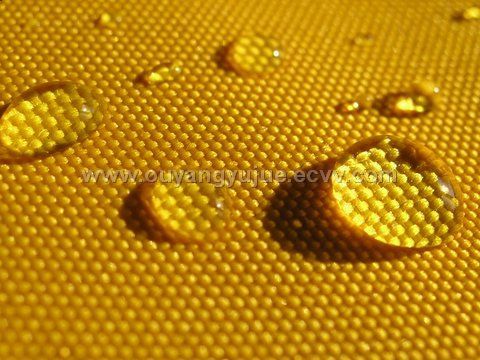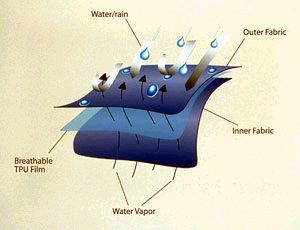Thoughts on hard shell-soft shell gore tex eVent and other musings
Snowboarding season is on. Time to obsess about gear related issues. Right now, my big obsession is on clothing. I've realized now that having the right gear, even if you pay a ton of money and only use it twice a year, is worth it. Because having wrong gear can just make life miserable. And when you travel several hours and pay out the wazoo you are going to get onto that slope for the mere principle of it. So you better have your system together otherwise it is going to make you hate it all.
My current thinking is that a good hardshell system combined with flexible layering is the way to go to accomodate varying range of conditions.
Here is a super Great article on layering.
Here' a good treatise on waterproof/water resistant fabrics
Proper gear encompasses wide definition. For me and snowboarding it includes good safety gear (wrist guards, kneepads, butt pad (you gotta not care what others people think, cause it looks lame, but I LOVE it. You sit in the hard snow alot and sit on cold lifts and fall on your but alot, so I love it. It gets sweaty some but so worth it to me)a helmet, Good wicking base layer, any old insulating layer and a good outer layer. Especially pants cause your in the snow a lot, mittens, and shell.
10 years ago I'd gotten the typical Gore Tex shell. You know the first generation that was super stiff when cold, didn't really breathe all that well, felt heavy, and lost its water beading quickly. I didn't like it all that much. It was so stiff it rubbed my chin raw, it was hard to move in. BUT, it was a hard shell: meaning windproof, waterproof, and tough as nails.
Part of it was that I didn't know how to take care of it the best, nor layer properly. See the key to waterproof style jackets that have 3 layers is that the DWR, or durable waterproof coating has to be in place.
The DWR is what gets the water and snow to bead on the jacket
 , then it rolls off. But if the DWR is rubbed off then the top layer will 'wet out' that means that the water soaks into the next layer. The fabric will look wet. It's typically NOT actually going through the other layers and leaking into the jacket But it does weigh down the fabric and enables the wind to start chilling you down very quickly.
, then it rolls off. But if the DWR is rubbed off then the top layer will 'wet out' that means that the water soaks into the next layer. The fabric will look wet. It's typically NOT actually going through the other layers and leaking into the jacket But it does weigh down the fabric and enables the wind to start chilling you down very quickly.  The other part of the equation is the breatability. That means letting water vapor generated by exertion leave your body and the inside of the jacket. Without breatheability, like the sitution you have with those garbage back type jackets is that you get water moisture building up on the inside of the jacket and hence into your inner clothes. Which means getting and staying cold.
The other part of the equation is the breatability. That means letting water vapor generated by exertion leave your body and the inside of the jacket. Without breatheability, like the sitution you have with those garbage back type jackets is that you get water moisture building up on the inside of the jacket and hence into your inner clothes. Which means getting and staying cold.When DWR wears off, and small pores in the gore tex material get dirty, then the breathability starts to shut down and you get clammy and moisture builds up on the inside.
So it's a complex situation, because even though you are not running and sweating like cycling and sprinting you are working hard, so you are creating some moisture, So breathability is important, waterproofing is equally important. The other thing I'm learning is that the insulating layer is al so important from limitations it can place on movements. I'm always bending over to get into my bindings and if I've got so many layers it it's a pain, also too many layer restrict movements and fleece on fleece friction makes twisting and moving hard.
So I was hating my jacket when a lot of the issues I could have taken care of with some good care.
Such as:
1) washing the jacket with a good NON-detergent soap. like Atsko sport was. Then reapplying a DWR such as this one that I saw recommended for Gore Tex and eVent and other waterproof breathable fabrics.
Wash, then let air dry, then apply the waterproofing, let it dry, then stick it in the dryer for 1/2 hour to really activate it and open up the waterproofing. Does it work? Not sure, I'm doing right now on some gore tex pants and other gear.
A few years ago, the whole soft shell phenom was going big. Softshell is a hybrid combo of a hard shell with an light insulation layer. In traditional layering systems, you start with a light base layer designed to wick moisture away from your skin. This layer is not warm at all, it's sole purpose is to keep your skin from being clammy and damp which leads to getting cold quickly. Hence the reason why cotton is considered a killer when next to skin, because cotton does not wick and it once damp it stays damp.
The second layer is in insulation layer. Something designed to hold warmth in when underneath an outer shell. Fleece, wool, down, primaloft. all fall in this category. You can pick the thickness based on how cold it is. These then go under the 'hard shell' like the old gore tex I described above.
Soft shells hit the scene, where then integrated a water resistent/windproof outer layer (some of the real expensive ones were truly waterproof) and an insulating layer together into one unit. So it was thicker than a hard shell, and it felt nice to the bare skin because it had a fleece inner fabric and not just that slick inner material of a shell. The material felt cool, and it looked cool and was/is all the rage.
So I obsessed for days and days searching for the best deal/value in a softshell and ended up with an Outdoor Research soft shell. And was promptly disappointed with it.
Why? Because softshells for me only work in a very limited range of conditions. Dry for one, and not super cold. Sure you I layer with it just like I did with a hard shell, but some things bugged me. like I'd put a fleece top on then the jacket, but the inner fleece of the jacket has so much friction with the fleece top it's so hard to move.
The outer layer is water resistent. Meaning that it has a DWR on it, but when it fades, water does seap through. the DWR on it was terrible, it wetted out quickly. Where we are, in the mid atlantic/virginia, we have short runs and slow lifts. And snow makers. So you don't warm up on the way down. You freeze in the wind on the slwo way up, and you get snowed on with ice pellets from the snowmaker. They melt immediately and if your DWR isn't beading you'll get wet quickly. Once the material is wetted out I start slowly freezing my ass.
Don't get me wrong. Softshell is breakthrough, and I wear it a ton. It is windproof, and it works in milder not so wet conditions great. But to me it isn't versatile enough for what I need and adaptiple to changing conditions.
So NOW, I'm back to obsessing about going back to a hard shell. Hours of googling and I'm starting to come to some conclusions that I'll share here. My perspective and singular focus is to go for the best functionality and best gear at the lowest price. Hence bang for the buck and value is always my driving compass. Good gear costs. ALOT one must change their pain threshold in terms of cost. I'm ok with this from my years of cycling and also power tools, etc. While I'm ok with it, hell if Im going to pay $400 for a shell. Closeouts, used or non popular brands is where I lean.
also one must be careful of the fakes products on ebay. The North Face products are notorious for this to the point that there are forums dedicated just to this issue. I came across this Peak Performance line at ebay that is a rip off of a high end line out of Europe. They look so much like the real deal, maybe they are real that are grey market overruns.
There's so much info out there you just gotta read a lot and see where postings agree with each other to filter out the junk.
Here are some good ones
eVEnt and Gore tex
another gore vs eVent
forum posts
One confusion I have is between 2 layer and 3layer fabrics. My conclusion is 2 layer is lighter and designed for more aerobics like running cycling and isn't as durable, I'm going for a tougher 3 Layer fabric.
Another thing to keep in mind is that many of these articles are written from an alpine, mountaneering, or backcountry mindset. Meaning that these activities involve a higher exertion level and hence place a much higher premium on breathability. Back to mid atlantic resort snowboarding, and breathability isn't as much of an issue. In fact the eVent fabric mentioned below has been criticized a little in that it breathes too well, and trapped warm air can escape cooling you down, so you need to dress a little warmer. Than compared to pro shell. I don't know but it sort of makes sense. But breathability is still very important because wear a cheap rain jacket and you'll be clammy in short order.
Gore tex is like kleenex. They are the king of market share. The old school Gore tex is now called Gore Tex Performance Shell. They lightweight hiking style is called Gore Tex Pac lite, they came out with a new product that had better breathability, not a stiff, and was still tough and waterproof called Gore Tex XCR. XCR has been replaced with Pro Shell, which is the top of the pops in the Gore line.
eVent fabric is considered the biggest competition. Lowe alpine made an eVent a few years ago that you might find for sale. Backcountry's Stoic line is made from eVent. Seems to have some sizing issues in terms of being cut for layering. WildThings uses eVent and has good reputation.
There are also a myriad of gore tex want to be's that tend to be lower priced. EMS System III, TNF Hy-Vent, AquaStopint,Membrain, conduit, Toray makes a couple of Entrant like Entrant GII-XT ,Columbia's Omni-Tech Platinum ,dermizax (by Spyder), Repel storm used in Eddie Bauer's First Ascent line (which by the way went to Chapter 11 and you can find a $300 jacket for under $130. Some don't have the breathability of Gore Tex or eVent
Here is an older chart that I think someone at an Army cold weather research center made that compares breathability in terms of water vapor passage. Interestingly, it shows the Entrant GII-XT to be very good compared to eVent. What isn't shown here is the level of waterproofness. But again I caution that waterproofness is really only as good as the DWR and capability to bead the water on the surface and not allow the top layer to wet out.
Everyone has their #s something like 20,000/20,000 these are measures of waterproofness and breathability. But I think the fundamental issues hold true for any of them. The DWR must be in good condition for water to bead, and the pores of the breathable fabric must be clean to promote transfer of water vapor from inside to the outside.
Other things to consider are taped sealed seams, Which truly keep water completely out.
so I'm still looking, I only want to do this once so I'm leaning towards Gore Tex Pro shell, 3 layer eVent, or possibly the Eddie Bauer 1st Ascent on closeout
Some more good reading
Older breathability comparison chart
UK climbing article on eVent



8 Comments:
Did the DWR application work??
I would like to try it if it worked.
nice blog i have visited your blog and it's really nice and use full for me... please add my post thanks
ebay software
I recently purchased a Cloudveil Koven Plus jacket for $188 (MSRP is $400). Have you done any research on this item and what are your findings?
koven on sale here
http://www.e-omc.com/catalog/products/3478/Cloudveil-Koven-Jacket-Mens.html
in size small
This looks like a good jacket. All these high tech fabrics are going to be good, The key I think is washing it regularly in a sport wash and keeping the DWR fresh.
That's the Koven Jacket you refer to. The one I purchased is the Koven Plus (Outside Magazine review: outside.away.com/outside/gear/gear.tcl?gear=Cloudveil-Koven-Plus&gear_id=5801&action=showgear)
Seems like a good hardshell, but I just purchased it. Unlike many soft-shells there's no insulation, but I'd rather have the ability to regulate layering according to activities and conditions. Am I "wrong" in thinking that (i.e., is a high-quality soft-shell really the way to go vs. the Koven Plus)?
Koven Plus looks killer. I've heard Schoeller makes good stuff regardless of softshell vs hardshell.
Where did you get it for $188 that's a good price.
I'm with you, that an uninsulated shell is the most flexible and adaptable. It's not the most convenient, as I can't just put it on alone next to skin. The softshell with the inner layer of fleece is much nicer for just grab/go but mine wet out so fast, and isn't as warm as my hardshell when combined with another insulator.
I just got an Eddie Bauer 1st Ascent Ranier on ebay for $89. It's warm and waterproof, but I wouldn't say it breathes super.
Ashwin,
I bought the Koven Plus from members-only website Gilt.com. Gilt has some very high-quality stuff and they've been offering more and more outdoor apparel.
I bought 2 Koven Plus jackets in size medium (one in color Bossa Nova and one in color Cedar Green) because I had a sufficient account credit. I'll probably return the Bossa Nova one after I receive the Cedar Green one (if I like the color as much as I did in the photos).
Also, if you want an invitation link for Gilt let me know your email address and I'll send one to you.
i interesting about more knowledge for DWR application.
Post a Comment
<< Home